 Here is a medieval drawing of St. Edmund. Edmund was king of East Anglia before England was united as one sovereign country. At the time, the British isle was subject to frequent and devastating raids by Vikings from Scandinavia. Usually the British people would pay tribute, or rather simply pay the Vikings off to avoid being pillaged. Edmund died a martyr. Imagine, a King of England dying for his Catholic faith.
Here is a medieval drawing of St. Edmund. Edmund was king of East Anglia before England was united as one sovereign country. At the time, the British isle was subject to frequent and devastating raids by Vikings from Scandinavia. Usually the British people would pay tribute, or rather simply pay the Vikings off to avoid being pillaged. Edmund died a martyr. Imagine, a King of England dying for his Catholic faith. St. Edmund, Martyr ~ Icon. You can see here the instruments of his martyrdom, the arrows. Also you see a wolf cradling a severed head. See next post for this story.
St. Edmund, Martyr ~ Icon. You can see here the instruments of his martyrdom, the arrows. Also you see a wolf cradling a severed head. See next post for this story.King of East Anglia, born about 840; died at Hoxne, Suffolk, 20 November, 870. The earliest and most reliable accounts represent St. Edmund as descended from the Wuffling line of preceding kings of East Anglia. Though only about fifteen years old when crowned on Christmas Day 855 by Bishop Humbert of Elmham. Edmund showed himself a model ruler from the first, anxious to treat all with equal justice, and closing his ears to flatterers and untrustworthy informers. In his eagerness for prayer he retired for a year to his royal tower at Hunstanton and learned the whole Psalter by heart, in order that he might afterwards recite it regularly. In 870 he bravely repulsed the two Danish chiefs Hinguar and Hubba who had invaded his dominions. They soon returned with overwhelming numbers, and pressed terms upon him which as a Christian he felt bound to refuse. In his desire to avert a fruitless massacre, he disbanded his troops and himself retired towards Framlingham; on the way he fell into the hands of the invaders. Having loaded him with chains, his captors conducted him to Hinguar, whose impious demands he again regjected, declaring his religion dearer to him than his life. His martyrdom took place in 870 at Hoxne in Suffolk.
After beating him with cudgels, the Danes tied him to a tree, and cruelly tore his flesh with whips. Throughout these tortures Edmund continued to call upon the name of Jesus, until at last, exasperated by his constancy, his enemies began to discharge arrows at him. This cruel sport was continued until his body had the appearance of a porcupine, when Hinguar commanded his head to be struck off. From his first burial-place at Hoxne his relics were removed in the tenth century to Beodricsworth, since called St. Edmundsbury, where arose the famous abbey of that name. His feast is observed 20 November, and he is represented in Christian art with sword and arrow, the instruments of his torture.
 St. Edmund's ~ Coat of Arms
St. Edmund's ~ Coat of ArmsSt. Edmund -Ora Pro Nobis!
(Source)

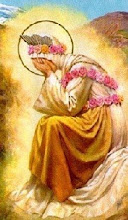
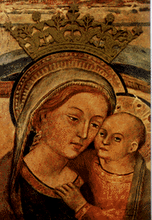
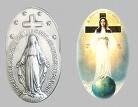

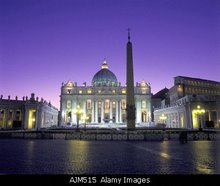

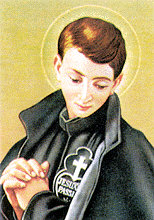
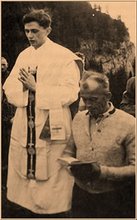
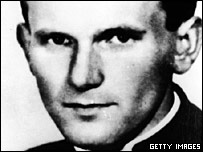
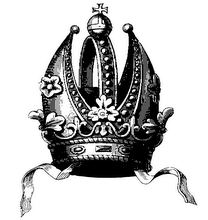
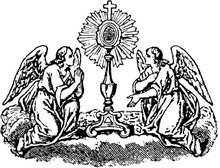
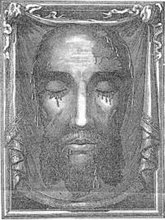
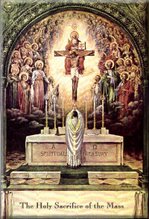

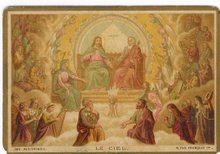

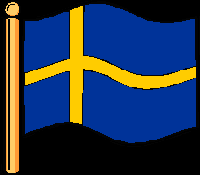

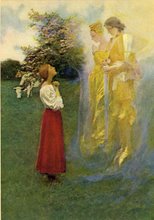
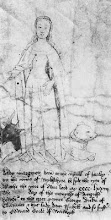01.jpg)


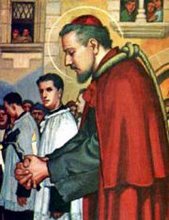

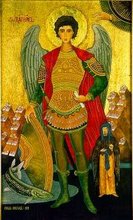

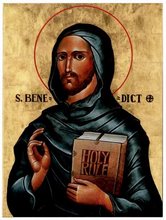




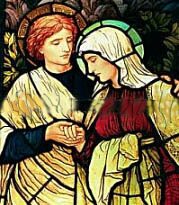

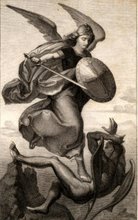


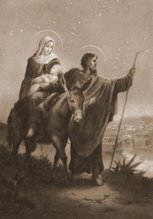
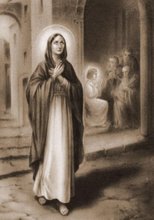
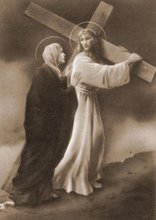
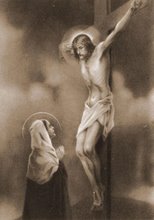
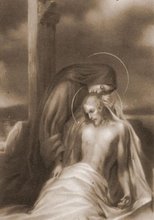
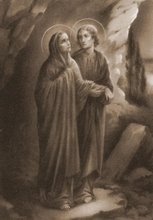
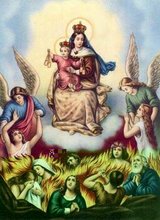

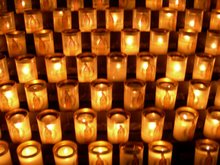
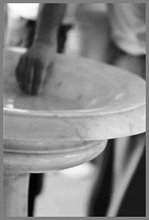
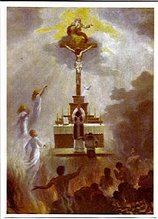
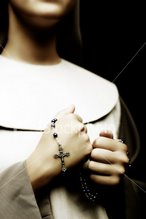

1 comment:
Wonderful post and pictures of St. Edmund, Martyr. I never knew anything about him and it was so interesting to add him to my saint friends. You have some fabulous pictures. The one I have is the Icon, your second from the end on your post. I think that one has some wonderful symbolism of his life. Thank you for bringing this to us all.
Post a Comment